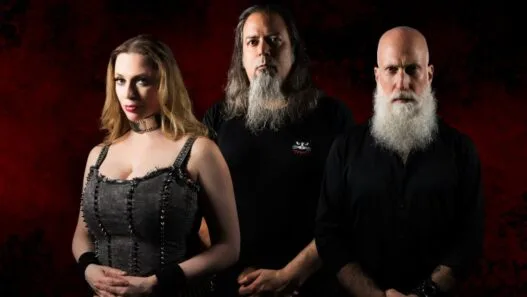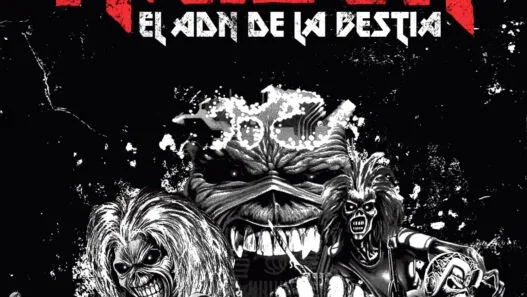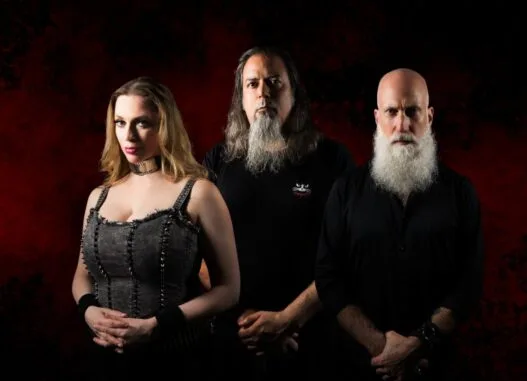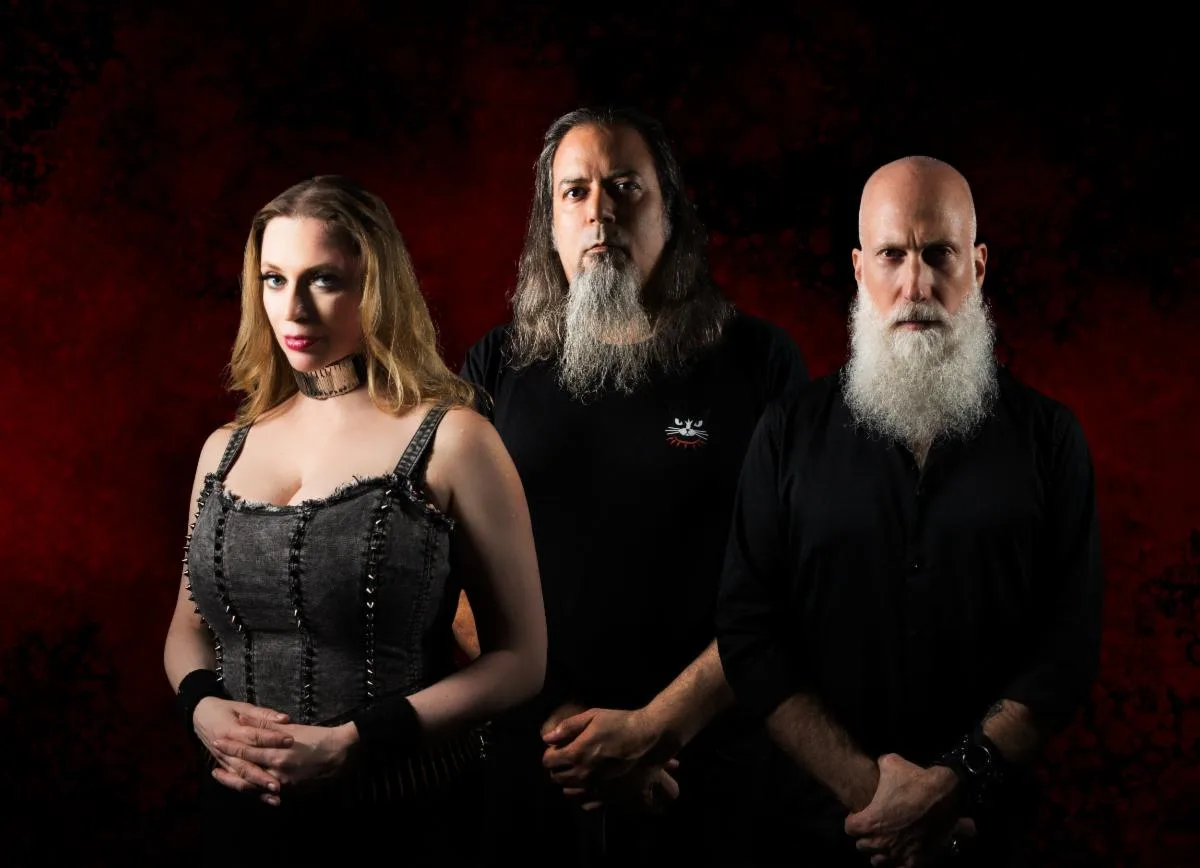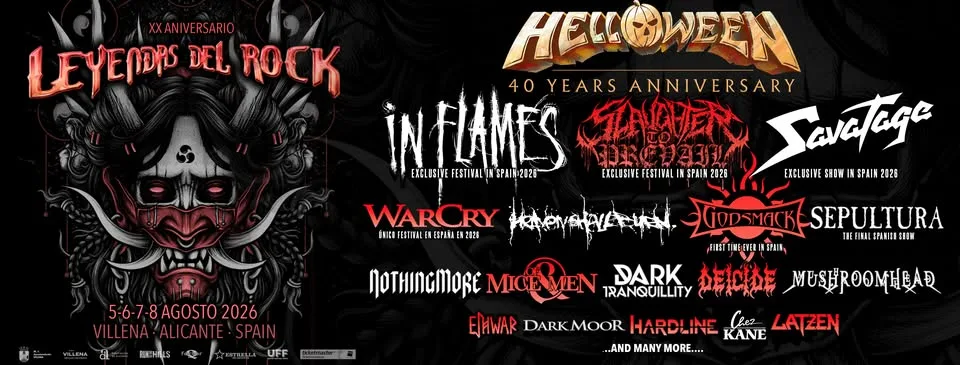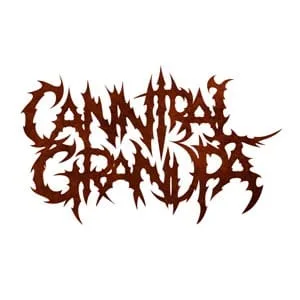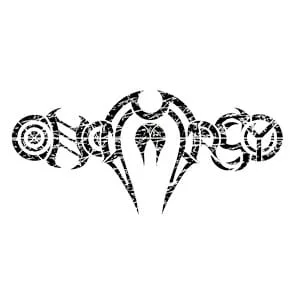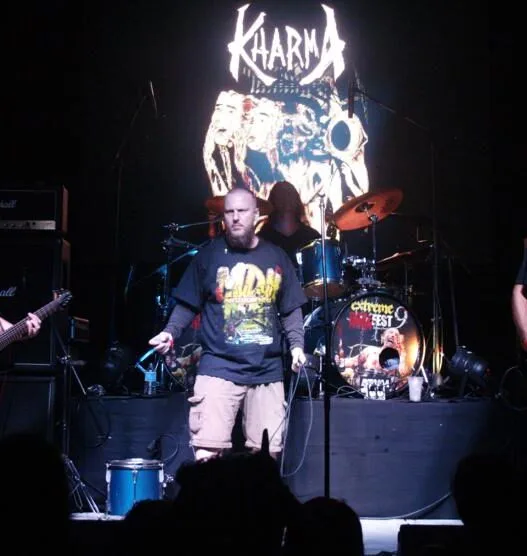(English Below)
Formada en 2024, Precious Blood reúne a veteranos de la escena neoyorquina: AJ (guitarra y voces), Dave Kramer (bajo y voces) y Grace Perez (batería y voces). Su sonido distintivo fusiona la pesadez del doom y el thrash metal con riffs e influencias tribales místicas.
La propuesta de Blackened Caribbean Doom del grupo se nutre líricamente del espíritu caribeño, explorando la brutal historia de la colonización, la resiliencia y los aspectos más oscuros de la existencia humana.
- «Blackened Caribbean Doom» es una etiqueta poderosa y única. ¿Cómo llegasteis a esta fusión de géneros? ¿Podríais desglosar los elementos específicos de la música tradicional caribeña o los sonidos tribales místicos que incorporaron en el álbum «False Prophets»?
PB: Todos venimos de diferentes orígenes musicales y estilos de vida. AJ proviene del hardcore y thrash de Nueva York, Grace creció con música clásica y black metal, y Dave es un thrasher de la vieja escuela. Sin embargo, valoramos las mismas cosas en la música. Canciones que tienen gran melodía, riffs monstruosos y batería atronadora, con un hook tan impactante que es como un puñetazo en la cara.
Grace y AJ pasaron mucho tiempo en el Caribe, viajando a diferentes islas, sumergiéndose en la cultura única de cada isla. Para AJ, fue reconectar con sus raíces, siendo de ascendencia cubana y puertorriqueña.
De vuelta en Nueva York, todas esas influencias y experiencias formaron Precious Blood.
Son en su mayoría nuestros temas líricos los que extraen profunda inspiración del espíritu perdurable del Caribe, moldeado por la brutal historia de colonización, la inquebrantable resiliencia de su gente, y la exploración de los aspectos más oscuros de la existencia humana, incluyendo la muerte, la contemplación de la mortalidad y las complejidades del sufrimiento humano.
Nuestro demo, «Bloodfire», tenía mucha más influencia musical de reggae y ska.
Sin embargo, con la incorporación de Dave, nuestro bajista, nuestro sonido tomó una dirección más extrema, similar al thrash. Aún se pueden escuchar las líneas de batería de tipo tribal en «Cemetery Burn» y «Footsteps of Babylon».
- AJ (Guitarra/Voces), Dave Kramer (Bajo/Voces) y Grace Perez (Batería/Voces) sois veteranos de la escena de Nueva York, habiendo tocado en bandas como Blood Feast, Jesus Knevil, etc. ¿Cómo influye su experiencia previa en el Thrash y el Underground Metal en la pesadez y los riffs Doom de Precious Blood?
AJ: El sonido de Precious Blood se basa en los tonos y afinaciones que había usado previamente. Si bien algunos aspectos de mi composición son completamente nuevos en este proyecto, ciertamente me basé en mis experiencias anteriores de composición para dar forma a la paleta del álbum.
DAVE: La mayoría de las bandas con las que he tocado en el pasado, o estoy tocando activamente actualmente, tienen solo un guitarrista, así que me esfuerzo por mantener la pesadez del sonido con mi estilo de tocar, independientemente del tempo de la canción.
- El álbum se titula «False Prophets». ¿A quién o a qué se dirige esta crítica lírica? ¿Es una referencia religiosa, política, histórica, o una combinación de todas ellas?
PB: Este álbum se llama «False Prophets», y te llevamos en el viaje desde la vida hasta la muerte, del sufrimiento de por vida a la tumba inminente. Toda nuestra existencia somos engañados por imbéciles disfrazados de ídolos, tontos velados como profetas. Ya sea la religión o el gobierno, no tenemos otra opción más que jugar según sus reglas y adaptarnos a sus formas, cuando todo lo que queremos es nuestra libertad personal.
A medida que la vida avanza, más dolor, pavor e impotencia se instalan. Todo lo que apreciamos cerca de nuestro corazón desaparece, los recuerdos de luz se desvanecen gradualmente con el tiempo y finalmente se convierten en oscuridad. La Muerte te respira en el cuello, y con cada paso, sientes tu destino inminente y final, la tumba.
- «Whore’s Grave» es el último sencillo con un video oficial. Grace, tú escribiste, dirigiste y editaste este video. ¿Qué significó tomar el control total de la narrativa visual y cómo ayuda la estética a transmitir la oscuridad lírica de la canción?
Grace: Soy cineasta, y el horror es mi género y medio favorito para trabajar. Mi protagonista en el video, Elise Valderrama, es mi musa y colaboradora de mucho tiempo, y escribí este guion pensando en ella. Ella interpreta el papel principal en mi cortometraje «La Diablesse», que de hecho se estrenó en España (Barcelona) como selección oficial del Espanto Film Festival este noviembre. Ella también estuvo en nuestro video anterior para «Watchtower Witch».
Sabía que ella era la elección perfecta.
Cada mujer se clasifica en 3 tipos durante su vida: una madre, una novia o una prostituta. Después de que morimos, la mayoría de nosotras se convierte en ángeles. Esta es una exploración de la esencia femenina, siendo esas 3 cosas a la vez, y sin embargo, siendo recordada y apreciada solo después de la muerte.
Con cada verso, sucumbes más y más profundamente a la tumba, mirando hacia atrás a tu vida y lo que podría haber sido, hasta que finalmente llegas a la oscuridad infinita absoluta y ya no puedes ver esa luz del cementerio, lo único que conectaba tu alma a esta vida.
Este es el único video que hice en el que no tenía la apariencia y la gradación de color específicas en mente antes del inicio del rodaje. Mi director de fotografía, Rigo Diaz, y yo, lo grabamos y mientras revisábamos nuestro metraje, supimos de inmediato que íbamos a hacer ciertas partes (el baile, despertarse a la mañana siguiente) muy oníricas, con eco visual y tonos rosados, reminiscentes de David Lynch, y ciertos colores iban a destacar a lo largo de todo el video, especialmente el rojo, como flores rojas, su lápiz de labios.
Las tomas del cementerio también eran oníricas y a contraluz, con Elise pareciendo un ángel que cobró vida.
Dejé que Elise conectara sus propias experiencias de ser mujer con esta narrativa, y ella convirtió esta canción en una historia visual inquietantemente hermosa, oscura y muy auténtica.
- Hemos notado que lanzasteis un «Álbum Visual» con cortometrajes para pistas como «Old Man Abaddon», «El Muerte» y «Whore’s Grave». ¿Por qué optaron por este enfoque de antología de horror cinematográfico (similar a Tales from the Crypt) en lugar de videos musicales estándar?
Grace: De nuevo, soy cineasta, y estoy absolutamente obsesionada con el horror. Veo películas de terror todos los días, clásicos antiguos en blanco y negro, gialli italianos, horror argentino, escandinavo, horror francés.
Estoy tan asombrada por las obras de Álex de la Iglesia, Alejandro Amenábar, Jaume Collet-Serra, Alejandro Iñárritu, Guillermo del Toro. También amo absolutamente Halloween.
No crecí en los Estados Unidos, así que nunca fui a pedir dulces ni me disfracé. Para mí, siempre fue un día mucho más profundo y espiritual donde el velo es el más delgado y los mundos de los muertos y los vivos difuminan sus límites y se unen como uno solo. ¡Pero ver películas de Halloween es muy divertido!
Siempre me encantó Tales from the Crypt, es campy, kitsch y divertido y espeluznante.
Así que hablé con los chicos y les propuse la idea de lanzar 3 de nuestros videos como cortometrajes, y empaquetarlos como una antología de horror de Halloween. Sabíamos que lanzaríamos el álbum la semana de Halloween, el 29 de octubre para ser exactos. Nuestro show de lanzamiento del disco fue el propio Halloween, y decidimos lanzar nuestro «False Prophets»: Visual Albums en Devil’s Night, también conocida como Mischief Night, el 30 de octubre.
Es un regalo divertido y espeluznante para nuestros fans, y les encantó absolutamente. ¡Quién sabe, tal vez eso cimente nuestra reputación como una Banda Oficial de Halloween!
- El material lírico se nutre del «espíritu caribeño,» abordando la brutal historia de colonización y resiliencia. ¿Qué desafío enfrenta la banda al equilibrar la narración de esta historia de sufrimiento con un mensaje de resiliencia y empoderamiento?
Grace: Creo que surge de forma bastante natural cuando se trata de equilibrar las letras. Conscientemente disocio mi yo cotidiano de mi yo creador, y simplemente me convierto en un vaso de lo que fluye a través de mí. Me sumerjo por completo en los diferentes mundos que construyo, y las letras simplemente suceden de forma natural. Creo mi propio mundo, el mundo de Precious Blood, donde somos solo observadores de grandes eventos históricos, pero los experimentamos a través de los ojos del conocimiento y la pasión.
Escribimos la mayoría de las letras ya sea en el Caribe, o en Europa, donde aún puedes sentir la presencia del pasado, puedes verla en las calles empedradas de París, en la arquitectura de las catedrales en Barcelona.
Escribimos nuestras canciones en los mismos cementerios en Turks y Caicos y Sint Maarten, donde los fantasmas de las personas allí enterradas han estado vagando por las mismas playas y mirando el mismo océano durante cientos de años.
Y eso te humilla, te hace darte cuenta de tu propia mortalidad. Pero no hay nada más empoderador que ser una continuación de la voz que ha estado gritando durante siglos.
- Pistas como «Footsteps of Babylon» y «Shadow of the Cross» sugieren un fuerte comentario sobre el poder y la religión. ¿Qué papel juega la espiritualidad o el misticismo, tanto caribeño como Blackened tradicional, en las letras de Precious Blood?
Grace: ¡Oh, amamos el misticismo! Nuestra mascota de la banda es una criatura maligna y de mal genio, tipo kraken, llamada Seamus. Nuestro logo está hecho de huesos rotos, cubiertos de sangre goteando. Tomamos parte del simbolismo pirata y lo envolvimos en la estética de Cannibal Holocaust, y así es como se representa Precious Blood.
Siento que mantienes tu verdadera espiritualidad cerca de tu corazón, es solo para ti, no para los ojos y juicios de los demás.
Nadie sabe con certeza lo que somos, pero es absolutamente obvio que cantaremos a Babilonia, resistiremos la opresión de todas y cada una de las religiones, y nos negaremos a obedecer las reglas impuestas sobre nosotros por tontos velados como profetas.
- El álbum incluye una pista llamada «El Muerte». ¿Existe alguna conexión temática o simbólica con otros proyectos de extreme metal que utilizan esta figura, o representa algo completamente diferente para ustedes?
PB: Esta pista está realmente inspirada en una historia real, una historia de supervivencia milagrosa de un marinero borracho, Sylbaris.
Una oda a la resiliencia del pueblo caribeño y la brutalidad de la naturaleza. Basada en una historia real que se desarrolló en 1902 en una hermosa isla de Martinica, a menudo conocida como el París del Caribe.
Un borracho del pueblo, Ludger Sylbaris, se metió en otra pelea de bar y fue arrestado por el policía local. No se rindió en silencio y luchó contra el policía. El policía arrojó al alborotador de la isla a prisión, que casualmente estaba ubicada en el sótano, justo al lado de la gloriosa Ópera. Toda la isla y los visitantes del continente se apresuraron a la Ópera para una actuación tentadora esa noche, dejando las calles de Martinica virtualmente vacías.
Sylbaris estaba cocinándose en su celda subterránea, enfurecido e inquieto.
De repente, una nube de humo negro se elevó desde la cima del Monte Pelée, indicando que el volcán de la isla cobró vida. El Monte Pelée explotó y envolvió toda la isla de Martinica en lava hirviendo, cobrando la vida de toda la isla, excepto una persona, Sylbaris.
El borracho del pueblo fue el único superviviente, sufriendo quemaduras por todo su cuerpo y casi eviscerando sus pulmones por inhalar el aire caliente lleno de ceniza. Pero incluso en esa pequeña celda, luchó por su vida. Se quitó la ropa y orinó sobre ella y bloqueó la puerta y la ventana. Se acostó en el suelo, tratando de respirar con cuidado y medido.
Sobrevivió.
Esta canción trata precisamente de eso, de tu lucha por sobrevivir, incluso cuando todos a tu alrededor están muertos. AJ escribió los versos principales en Barcelona. El estribillo es un riff menor ascendente inspirado en Mercyful Fate.
- Dada la profunda exploración del proyecto del brutal legado de la colonización, ¿hay alguna figura o historia histórica particular del Caribe que inspiró más directamente una pista en «False Prophets»?
PB: Tiene que ser la historia detrás de «Footsteps of Babylon».
Cuando la gente nos pregunta, «¿Qué significa ‘Blackened Caribbean Doom’?», esta canción es la respuesta.
«Footsteps of Babylon» resume el término Blackened Caribbean Doom.
Esta canción trata sobre el alcance excesivo y la omnipresencia de Babilonia, los gobiernos, instituciones y estructuras sociales corruptas, opresivas y materialistas.
Honramos a los rastafaris que usan la música, particularmente el reggae, y una filosofía de autosuficiencia para «cantar a Babilonia» o desmantelar este sistema opresivo y reclamar su identidad.
En los estribillos, gritamos «Burn Babylon» (Quema Babilonia), refiriéndonos directamente a un evento específico, El Motín Laboral de St. Croix de 1878, también conocido como el Fireburn (Quema de Fuego).
Fue un evento histórico crucial de resistencia y dificultades laborales en las Indias Occidentales Danesas, que ilustra los efectos duraderos de la esclavitud y la explotación sistemática de los trabajadores liberados.
Incluso después de que se declaró la emancipación en 1848, los antiguos esclavos fueron forzados a contratos que los mantendrían trabajando y viviendo en condiciones difíciles.
El 1 de octubre de 1878, Día del Contrato, una protesta contra estas injusticias estalló en una rebelión, liderada por mujeres apodadas las «Cuatro Reinas». Para nosotros era importante que la letra de Burn Babylon tuviera una voz femenina (la de Grace), para canalizar ese poder puro que proviene de las fuentes más inesperadas.
Este levantamiento todavía se recuerda hoy como un símbolo de resistencia a la opresión sistemática.
Musicalmente, el hi hat break de la batería después del bridge está inspirado en el estilo de tocar de Sly Dunbar y es un gran contraste con el resto de la canción.
Esta canción es completamente única para todos nosotros, nos define no solo temáticamente y líricamente, sino también musicalmente. Originalmente fue concebida en la guitarra acústica de AJ. En el estudio durante la grabación, él agregó un patrón vocal completamente diferente.
- La Ciudad de Nueva York es un crisol de géneros. ¿Cómo percibis la escena local de Doom y Extreme Metal hoy? ¿Hay suficiente espacio para un sonido tan específico como el de Precious Blood?
AJ: Crecí en la Ciudad de Nueva York, inmerso en hardcore, thrash y punk. La escena ha cambiado significativamente desde entonces. Actualmente, la escena metalera local, especialmente el extreme metal, enfrenta limitaciones en cuanto a locales para bandas pequeñas, emergentes y sin firmar.
Con la creciente popularidad del metal en EE. UU., estamos listos para allanar el camino para bandas extremas como la nuestra y diversificar el género.
Como banda nueva, nos conectamos con personas de ideas afines, y estamos decididos a actuar en locales más grandes en Nueva York y las áreas circundantes, revitalizando y elevando el metal a su lugar legítimo.
DAVE: La belleza de Nueva York es que en cualquier noche uno puede salir a ver música en vivo de todos los diferentes estilos. Creo que hay espacio para cualquier banda con un sonido único, pero el desafío es atraer a una multitud debido a todas las opciones. A menudo hay múltiples shows de metal sucediendo en la misma noche, por lo que los fans deben elegir uno sobre otro.
- Como veteranos, habéis sido testigos de la evolución de la escena Underground Metal a lo largo de los años. ¿Cuál es el cambio más significativo (positivo o negativo) que han notado en la industria o comunidad del Extreme Metal desde que comenzaron?
AJ: La música extrema es cada vez más popular y accesible a nivel mundial, pero no aquí en Nueva York.
Durante nuestros viajes por Europa, fuimos testigos de una escena metalera próspera tanto en Europa del Este como en Europa Occidental. Sin embargo, en EE. UU., a pesar de la popularidad de la escena underground metal, muchas personas no la acogen completamente ni proporcionan los locales necesarios para expandir su alcance a una audiencia más amplia.
Todavía está al acecho en las sombras, y la gente no lo ve como algo que pueda generar ganancias para sus clubes y bares. Como banda en ascenso, reservamos la mayoría de nuestros conciertos en Nueva Jersey. Nueva York, especialmente Manhattan, ofrece muy pocas opciones para bandas como nosotros.
DAVE: Con el uso de las redes sociales, creo que es mucho más fácil hoy en día encontrar nuevas bandas para ver. Los fans no están limitados a solo poder encontrar una banda localmente, teniendo la oportunidad de descubrir nuevos artistas de todo el mundo. Si bien la audiencia puede ser más pequeña hoy en día, creo que los fans que aprecian la música definitivamente están ahí fuera.
Grace: Cuando era muy joven, mi mejor amiga Estephany y yo íbamos a veces a algunos bares de rock locales, pero nunca nos quedábamos mucho tiempo, porque la escena estaba muy dominada por hombres, y cuando veían a 2 mujeres, simplemente no podíamos escapar de la atención no deseada y agresiva.
Ahora, cuando tocamos en clubes locales, las mujeres siempre se me acercan y dicen lo agradable que es no ser la ‘única chica en un show de metal’. Realmente espero que allanemos el camino para una escena metalera en Nueva York más inclusiva y libre de juicios, donde puedas usar lo que quieras, ser mujer, ser gay, joven, viejo, y aún así disfrutar del metal y no ser juzgado por tu apariencia o lo que usas.
- El concepto de «fusión» en el extreme metal a veces puede ser divisivo. ¿Cuál creis que es la clave para mezclar con éxito elementos de géneros tan dispares, como el Black Metal, Doom e influencias tribales, sin que el resultado se sienta forzado o diluido?
Grace: Siento que esta fusión temática y musical es bastante orgánica y natural para nosotros. Por ejemplo, crecí con Black Metal, y no hay nada en el mundo que ame más que ver una gran banda de black metal en vivo. Experimentar a Watain en el Hellfest hace unos años me dio tanta confianza y me inspiró a seguir mi propio camino (de la mano izquierda). Con cada palabra blasfema, con cada llama negra disparándose hacia el cielo nocturno, me hice más y más fuerte, y nunca me disculparé por mis letras, mis películas o cualquier otra cosa que cree.
Pero también amo el reggae, amo el Caribe, amo la vida isleña y hay tanta belleza y felicidad en simplemente estar en esta increíble naturaleza, escuchar el océano y caminar bajo arcoíris. Y sin embargo, estas son 2 partes de la misma persona, yo. ¿Es común? Probablemente no, pero coexiste en mi ser, y amo cada parte de ello. Estar abierto a diferentes caminos de vida y varias experiencias crea el universo orgánico perfecto dentro de ti, y mientras seas fiel a ti mismo, es lo único que importa.
AJ: Fusionar diferentes géneros fue fácil debido a mis influencias del thrash y doom, junto con crecer con música española. Si bien la música en sí es vibrante, las letras a menudo exploran temas más oscuros. Esta mezcla ha inspirado gran parte de nuestro contenido lírico, llevándonos a definir nuestro sonido como Blackened Caribbean Doom.
- Grabasteis y mezclasteis el álbum en Catskills Studios. ¿Existe algún ambiente o ritual específico que la banda crea que es esencial para capturar la pesadez y la atmósfera mística de su música en el estudio?
Grace: Nos quedamos en la misma casa mientras grabábamos, así que cenamos, pasamos el rato y compartimos el mismo espacio en una casa cubierta de nieve en medio del bosque en el estado de Nueva York en febrero y marzo.
Realmente llegas a conocerte en estas circunstancias.
Eso realmente nos acercó y nos dio ese sentido de unidad.
AJ: Escribimos gran parte de este álbum en el estudio, y estar juntos bajo el mismo techo fue un catalizador para la creatividad.
- Si pudierais elegir un artista caribeño icónico (de cualquier género) para un cover o colaboración que se alineara con el sonido de Precious Blood, ¿quién sería y por qué?
PB: Burning Spear. Aunque su sonido puede no coincidir directamente con el nuestro, su espíritu y pasión encarnan verdaderamente nuestra esencia. Contar con este icono del reggae en nuestra música sería un tremendo honor.
- El Blackened Caribbean Doom exige imágenes impactantes. Si tuvierais un presupuesto ilimitado para una producción de escenario en vivo, ¿qué elementos visuales o teatrales incorporarían para sumergir verdaderamente a la audiencia en la experiencia Precious Blood?
Grace: ¡Humo, sangre y fuego! Usaría algunos hazers extremadamente potentes, tal vez algunas grandes pyros, como cruces invertidas en llamas, y me encantaría hacer que mi batería sangrara.
- Para terminar: tenéis una canción llamada «Cemetery Burn» (Quema de Cementerio). ¿Qué objeto simbólico o reliquia, que represente un «falso profeta», quemarían metafóricamente en un cementerio para purificar la escena metalera o el mundo en general?
PB: ¡El único, el hombre en la cruz mismo, Jesucristo!
Redes Sociales
Facebook: https://www.facebook.com/preciousbloodband/
Instagram: https://www.instagram.com/preciousbloodband
Bandcamp: https://preciousblood2.bandcamp.com/music
Youtube: https://www.youtube.com/@PreciousBloodMusic
Miembros
AJ -Guitarra, Voz
Grace Perez – Bateria, Backing Vocals
Dave Kramer – Bajo, Backing Vocals
Fully formed in 2024, Precious Blood brings together veterans of the NYC scene: AJ (guitar and vocals), Dave Kramer (bass and vocals), and Grace Perez (drums and vocals). Their distinctive sound fuses the heaviness of doom and thrash metal with riffs and mystical tribal influences.
The group’s Blackened Caribbean Doom proposal is lyrically nourished by the Caribbean spirit, exploring the brutal history of colonization, resilience, and the darker aspects of human existence.
- «Blackened Caribbean Doom» is a powerful and unique tag. How did you arrive at this fusion of genres? Could you break down the specific elements of traditional Caribbean music or the mystical tribal sounds you incorporated into the «False Prophets» album?
PB: We all came from different musical backgrounds and walks of life. AJ came from NY hardcore and thrash, Grace grew up on classical music and black metal, and Dave is an old school thrasher. However, we value the same things in music. Songs that have great melody, monstrous riffs and thundering drums, with a hook so impactful, it is like a punch in the face.
Grace and AJ spent a lot of time in the Caribbean, travelling to different islands, submerging themselves to the unique culture of each island. For AJ it was reconnecting with his roots, being of Cuban and Puertorican descent.
Back in NYC, all those influences and experiences formed Precious Blood.
It is mostly our lyrical themes that draw profound inspiration from the enduring spirit of the Caribbean, shaped by brutal history of colonization, unwavering resilience of its people, and exploration of the darker aspects of human existence, including death, contemplation of mortality and the complexities of human suffering.
Our demo «Bloodfire», had a lot more reggae and ska influence musically.
However, with the addition of Dave, our bass player, our sound took a more extreme, thrash like direction. You can still hear the tribal-like drum lines in «Cemetery Burn» and «Footsteps of Babylon».
- AJ (Guitar/Vocals), Dave Kramer (Bass/Vocals), and Grace Perez (Drums/Vocals) are NYC scene veterans, having played in bands like Blood Feast, Jesus Knevil, etc. How does your prior experience in Thrash and Underground Metal influence the heaviness and Doom riffs of Precious Blood?
AJ: The sound of Precious Blood draws upon the tones and tunings that I had used previously. While some aspects of my writing are entirely new to this project, I certainly relied on my earlier songwriting experiences to shape the palette of the album.
DAVE: Most of the bands I have played with in the past, or are actively playing with currently, have only one guitarist, so I strive to maintain the heaviness of the sound with my playing style, regardless of the tempo of the song.
- The album is titled «False Prophets». Who or what is this lyrical critique aimed at? Is it a religious, political, historical reference, or a combination of them all?
PB:This album is called «False Prophets», and we take you on the journey from life to death, lifelong suffering to the imminent grave. Our whole existence we are lied to by imbeciles cloaked as idols, fools veiled as prophets. Whether religion or government, we have no other choice, but to play by their rules and adapt to their ways, when all we want is our personal freedom.
As life goes on, more pain, dread and helplessness sets in. Everything that we hold near to our heart disappears, memories of light fade gradually with time and ultimately turn into darkness. Death breathes on your neck, and with every step, you feel your ultimate imminent fate, the grave.
- «Whore’s Grave» is the latest single with an official video. Grace, you wrote, directed, and edited this video. What did it mean to take full control of the visual narrative, and how does the aesthetic help convey the song’s lyrical darkness?
Grace: I am a filmmaker, and horror is my favorite genre and medium to work in. My leading lady in the video, Elise Valderrama , is my long-time muse and collaborator, and I wrote this script with her in mind. She plays the lead role in my short film «La Diablesse», which actually premiered in Spain (Barcelona) as an official selection of the Espanto Film Festival this November. She was also in our earlier video for Watchtower Witch.
I knew that she was the perfect choice.
Every woman is categorized into 3 types during her life, a mother, a bride, or a whore. After we die, most of us become angels. This is an exploration of a female essence, being all of those 3 things at once, and yet being remembered and appreciated only after death.
With every verse, you succumb deeper and deeper into the grave, looking back at your life and what it could have been, till you finally arrive into absolute infinite darkness and you can no longer see that cemetery light, the only thing that connected your soul to this life.
This is the only video that I made that I did not have the specific look and colorgrading in mind before the start of the shoot. My cinematographer, Rigo Diaz and I, shot it and while we looking back at our footage, we knew right away that we were going to make certain parts (the dance, waking up the morning after) very dream like, with visual echo and pink hues, reminiscent of David Lynch, and certain colors were going to pop through the whole video, especially red, such as red flowers, her lipstick.
The cemetery shots were also dreamy and backlit, with Elise looking like an angel that came to life.
I let Elise connect her own experiences of being a woman to this narrative, and she made this song a hauntingly beautiful, dark and very authentic visual story.
- We’ve noted that you released a «Visual Album» featuring short films for tracks like «Old Man Abaddon», «El Muerte», and «Whore’s Grave». Why did you opt for this cinematic horror anthology approach (akin to Tales from the Crypt) instead of standard music videos?
Grace: Again, I am a filmmaker, and I am absolutely obsessed with horror. I watch horror films every day, old black and white classics, Italian gialli, Argentinian horror, Scandinavian, French horror.
I am so amazed by the works of Alex de la Iglesia, Alejandro Amenabar, Jaume Collet-Serra, Alejandro Inarritu, Guillermo del Toro. I also absolutely love Halloween.
I did not grow up in the US, so I never went trick or treating or dressed up in costumes. For me, it was always a much deeper, spiritual day when the veil is the thinnest and the worlds of the dead and the living blur their boundaries and come together as one. But watching Halloween movies is so much fun!
I always loved Tales from the Crypt, it is campy, kitschy and spooky fun.
So I talked to the guys and pitched the idea of releasing 3 of our videos as short films, and packaging it as a Halloween horror anthology. We knew we were releasing the album Halloween week, October 29th to be exact. Our record release show was on Halloween itself, and we decided to release our «False Prophets»: Visual Albums on Devil’s night, also known as Mischief night, October 30th.
It is a fun and spooky treat for our fans, and they absolutely loved it. Who knows, maybe that will cement our reputation as an official Halloween Band!!
- The lyrical material draws from the «Caribbean spirit», addressing the brutal history of colonization and resilience. What challenge does the band face in balancing the storytelling of this history of suffering with a message of resilience and empowerment?
Grace: I think it comes pretty naturally when it comes to balancing out the lyrics. I conscientiously disassociate my everyday self with my creator self, and just become a vessel of what flows through me. I immerse myself completely in the different worlds that I build, and lyrics just happen naturally. I create my own world, the world of Precious Blood, where we are just observers of great historical events, but we experience them through the eyes of knowledge and passion.
We wrote most of the lyrics either in the Caribbean, or in Europe, where you can still feel the presence of the past, you can see it in the cobblestone streets of Paris, in the architecture of cathedrals in Barcelona.
We wrote our songs in the same cemeteries in Turks and Caicos and Sint Maarten, where the ghosts of the people buried there have been wandering the same beaches and looking at the same ocean for hundreds of years.
And that humbles you, makes you realize your own mortality. But there is nothing more empowering, than being a continuation of the voice that has been screaming for centuries.
- Tracks like «Footsteps of Babylon» and «Shadow of the Cross» suggest a strong commentary on power and religion. What role does spirituality or mysticism—both Caribbean and traditional Blackened—play in Precious Blood’s lyrics?
Grace: Oh we love mysticism! Our band mascot is an evil, ill tempered kraken type creature named Seamus. Our logo is made from broken bones,covered in dripping blood. We took some of the pirate symbolism and wrapped it in the Cannibal Holocaust aesthetic, and that’s how Precious Blood is represented.
I feel that you keep your true spirituality close to your heart, it is just for you, not for the eyes and judgements of others.
No one knows for sure what we are, but it is absolutely obvious that we will chant down Babylon, resist the oppression of every and all religions, and refuse to obey the rules imposed on us by fools veiled as prophets.
The album includes a track named «El Muerte». Is there any thematic or symbolic connection to other extreme metal projects using this figure, or does it represent something entirely different for you?
PB: This track is actually inspired by a true story, a story of miraculous survival of a drunk sailor, Sylbaris.
An ode to resilience of the Caribbean people and brutality of nature. Based on a true story that unfolded in1902 on a beautiful island of Martinique, often referred to as the Paris of The Caribbean.
A town drunk, Ludger Sylbaris, got into yet another bar brawl and got arrested by the local policeman. He did not go down quietly, and fought the policeman. The policeman threw the island hell raiser in prison, which just happened to be located in the basement, right by the glorious Opera house. The whole island and visitors from the mainland rushed into the Opera house for a tantalizing performance that night, leaving the streets of Martinique virtually bare.
Sylbaris was stewing in his underground jail cell, enraged and restless.
All of a sudden, a cloud of black smoke rose from the top of Mount Pele, indicating that the island volcano came alive. Mount Pele exploded and engulfed the entire island of Martinique in boiling hot lava, claiming the lives of the entire island, except one person, Sylbaris.
The town drunk was the lone survivor, sustaining burns all over his body and almost eviscerating his lungs from inhaling the ash filled hot air. But even in that tiny cell, he fought for his life. He took off his clothes and urinated on them and blocked the door and window with them. He laid on the ground, trying to breathe carefully and measured.
He survived.
This song is about just that, your fight to survive, even when everyone around you is dead. AJ wrote the main verses in Barcelona.
The chorus is an ascending minor riff inspired by Merciful Fate.
- Given the project’s deep exploration of colonization’s brutal legacy, is there a particular historical figure or story from the Caribbean that most directly inspired a track on «False Prophets»?
PB: it has to be the story behind ‘’Footsteps of Babylon”.
When people ask us, «What does ‘Blackened Caribbean Doom mean?”, this song is the answer.
«Footsteps of Babylon» summarizes the term Blackened Caribbean Doom.
This song is about the over reach and omnipresence of Babylon, the corrupt, oppressive, and materialistic governments, institutions, and societal structures.
We honor the Rastafarians who use music, particularly reggae, and a philosophy of self-reliance to «chant down» or dismantle this oppressive system and reclaim their identity.
In the choruses, we call out to Burn Babylon, directly referring to a specific event,
The St. Croix Labor Riot of 1878, also known as the Fireburn.
It was a crucial historical event of resistance and labor hardship in the Danish West Indies, illustrating the lasting effects of the slavery and systematic exploitation of liberated laborers.
Even after emancipation was declared in 1848, former enslaved people were forced into contracts that would keep them working and living in harsh conditions.
On October 1, 1878, Contract Day, a protest against these injustices erupted into a rebellion, led by women dubbed the «Four Queens». It was important to us that the Burn Babylon lyric would have a female voice (Grace’s), to channel that raw power that comes from the most unexpected sources.
This uprising is still remembered today as a symbol of resistance to systematic oppression.
Musically, drums hi hat break after the bridge is inspired by Sly Dunbar’s style of playing and is a great contrast to the rest of the song.
This song is completely unique for all of us, it defines us not just thematically and lyrically, but also musically. It was originally conceived on AJ’s acoustic guitar. In the studio during the recording, he added a completely different vocal pattern.
- New York City is a melting pot of genres. How do you perceive the local Doom and Extreme Metal scene today? Is there enough space for a sound as specific as Precious Blood’s?
AJ:I grew up in New York City, immersed in hardcore, thrash, and punk. The scene has changed significantly since then. Currently, the local metal scene, especially extreme metal, faces limitations regarding venues for small, emerging unsigned bands.
With the rising popularity of metal in the U.S., we are ready to pave the way for extreme bands like ours and diversify the genre.
As a new band, we connect with like-minded people, and we are determined to perform in larger venues in NYC and the surrounding areas, revitalizing and elevating metal to its rightful place.
DAVE: The beauty of NYC is that on any given night one can go out to see live music of all different styles. I believe there is room for any band with a unique sound, but the challenge is to draw a crowd because of all the choices. Often there are multiple metal shows happening on the same night, so the fans must choose one over the other.
- As veterans, you have witnessed the evolution of the Underground Metal scene over the years. What is the most significant change (positive or negative) you have noticed in the Extreme Metal industry or community since you started?
AJ: Extreme music is increasingly popular and accessible globally, but not here in NYC.
During our travels in Europe, we witnessed a thriving metal scene across both Eastern and Western Europe. However, in the U.S., despite the underground metal scene’s popularity, many people do not fully embrace it or provide the necessary venues to expand its reach to a wider audience.
It is still lurking in the shadows, and people do not see it as something that can bring profit to their clubs and bars. As an up and coming band, we book most of our gigs in New Jersey. NYC, especially Manhattan, offers very few options for bands like us.
DAVE: With the use of social media, I believe it’s a lot easier these days to find new bands to check out. Fans are not limited to only being able to find a band locally, having the opportunity to discover new artists from around the globe. While the audience may be smaller these days, I believe that the fans who appreciate the music are definitely out there.
Grace: When I was really young, my best friend Estephany and I would go sometimes to some local rock bars, but we never stayed long, because the scene was very male dominated, and when they saw 2 women, we just could not escape the unwanted and aggressive attention.
Now, when we play shows in local clubs, women always come up to me and say how nice it is not to be the ‘only chick at a metal show’. I really hope that we will pave the way for a more inclusive, judgement free metal scene in NY, where you can wear whatever you want, be a woman, be gay, young, old, and still enjoy metal and not be judged by your looks or what you wear.
- The concept of «fusion» in extreme metal can sometimes be divisive. What do you believe is the key to successfully blending elements from such disparate genres—like Black Metal, Doom, and tribal influences—without the result feeling forced or diluted?
Grace: I feel like this thematic and musical fusion is quite organic and natural to us. For exam[le, I grew up on Black Metal, and there is nothing in the world that I love more than seeing a great black metal band live. Experiencing Watain at Hellfest a few years ago gave me so much confidence and inspired me to stay on my own path (of the left hand). With every blasphemous word, with every black flame shooting up into the night sky, I grew stronger and stronger, and I will never apologize for my lyrics, my films or anything else I create.
But I also love reggae, I love the Caribbean, I love island life and there is so much beauty and happiness in just being in this amazing nature, listening to the ocean and walking under rainbows. And yet, these are 2 parts of the same person, me. Is it common? Probably not, but it co-exists in my being, and I love every part of it. Being open to different life paths and various experiences creates the perfect organic universe within you, and as long as you are true to yourself, it is the only thing that matters.
AJ: Fusing different genres came easily due to my influences from thrash and doom, alongside growing up with Spanish music. While the music itself is vibrant, the lyrics often explore darker themes. This blend has inspired much of our lyrical content, leading us to define our sound as Blackened Caribbean Doom.
- You recorded and mixed the album at Catskills Studios. Is there any specific environment or ritual the band believes is essential to capturing the heaviness and mystical atmosphere of your music in the studio?
Grace: We stayed in the same house while recording, so we had dinners, hung out and shared the same space in a snow-covered house in the middle of the woods in Upstate New York in February and March.
You really get to know each other under these circumstances.
That really brought us closer together and gave us that sense of unity.
AJ: We wrote a lot of this album in the studio, and being together under the same roof was a catalyst for creativity.
- If you could choose one iconic Caribbean artist (from any genre) for a cover or collaboration that aligns with Precious Blood’s sound, who would it be and why?
PB: Burning Spear. While his sound may not directly match ours, his spirit and passion truly embody our essence. Featuring this reggae icon in our music would be a tremendous honor.
- Blackened Caribbean Doom calls for striking imagery. If you had an unlimited budget for a live stage production, what visual or theatrical elements would you incorporate to truly immerse the audience in the Precious Blood experience?
Grace: Smoke, blood and fire! I would use some extremely powerful hazers, maybe some great pyros, like upside crosses on fire, and I would love to make my drumkit bleed.
- To wrap up: you have a song called «Cemetery Burn». What symbolic object or relic, representing a «false prophet,» would you metaphorically burn in a cemetery to purify the metal scene or the world at large?
PB: the one and only, the man on the cross himself, Jesus Christ!



